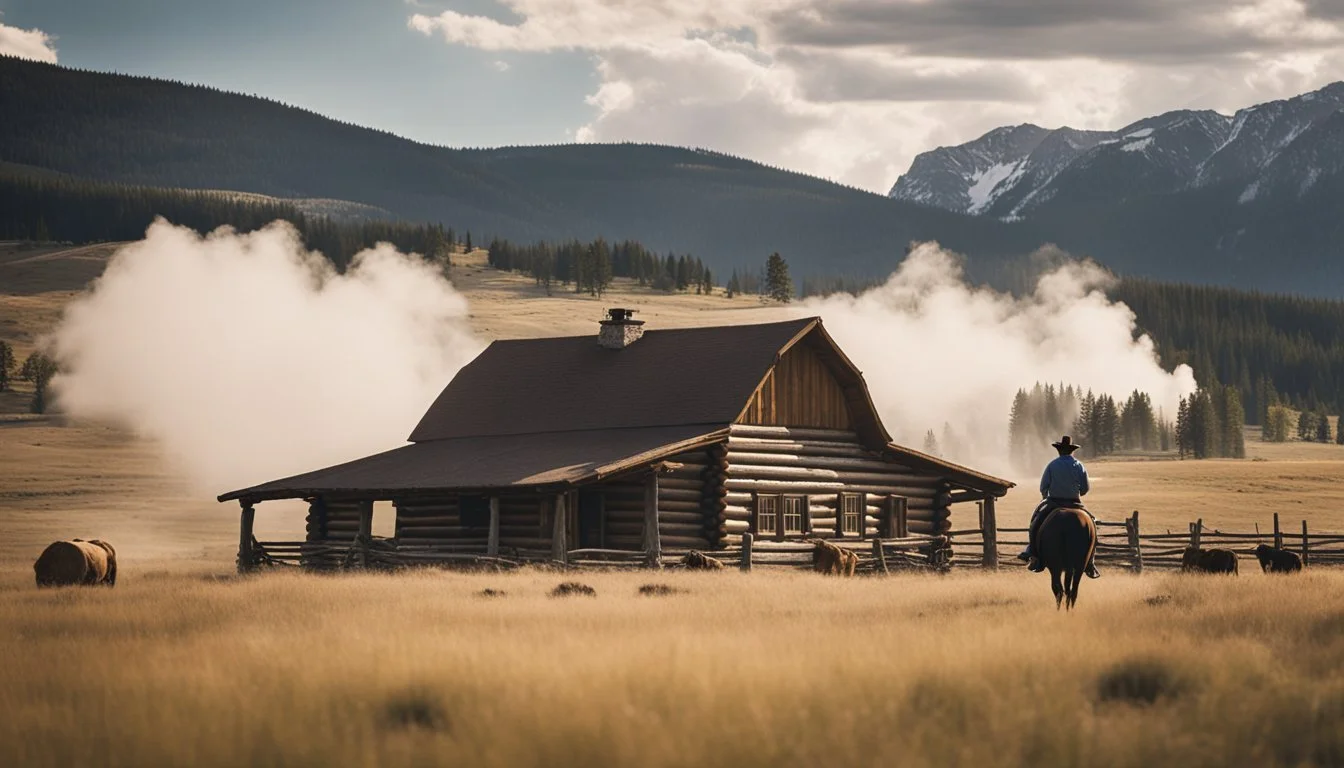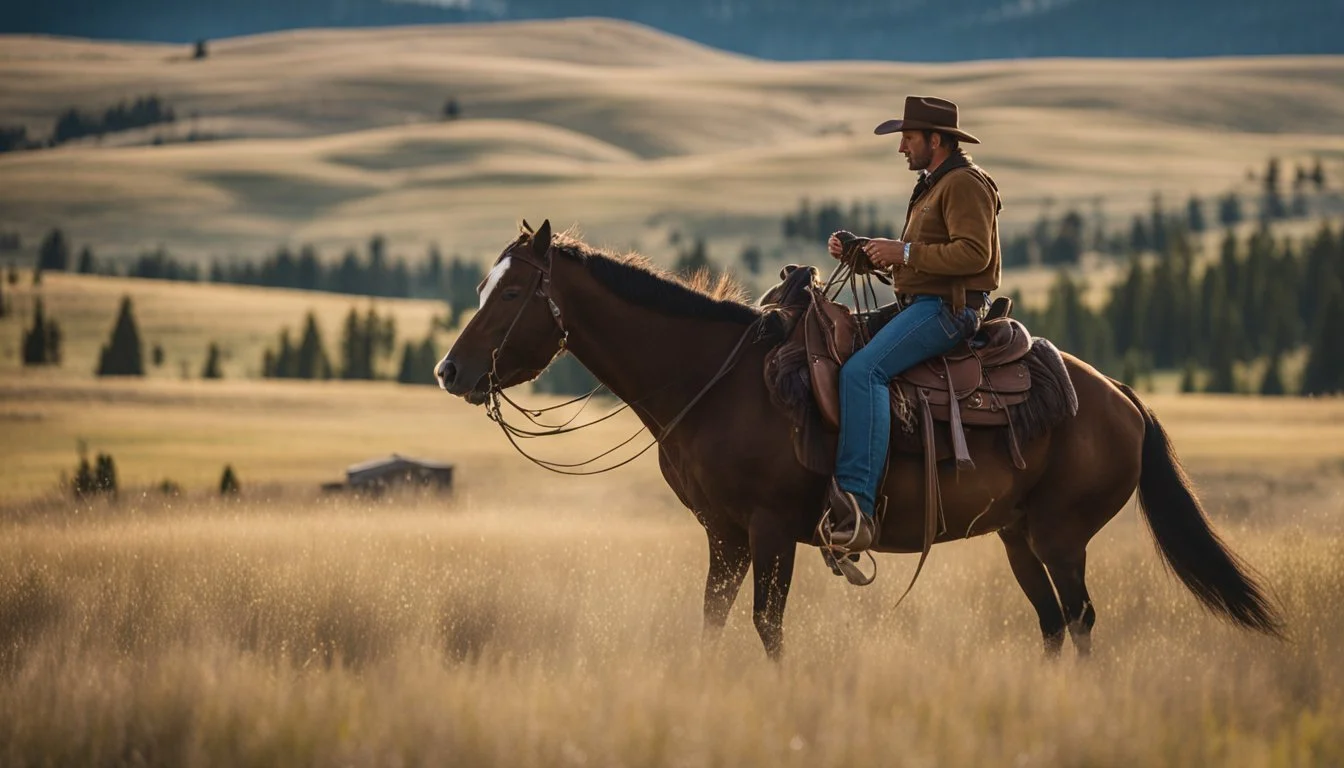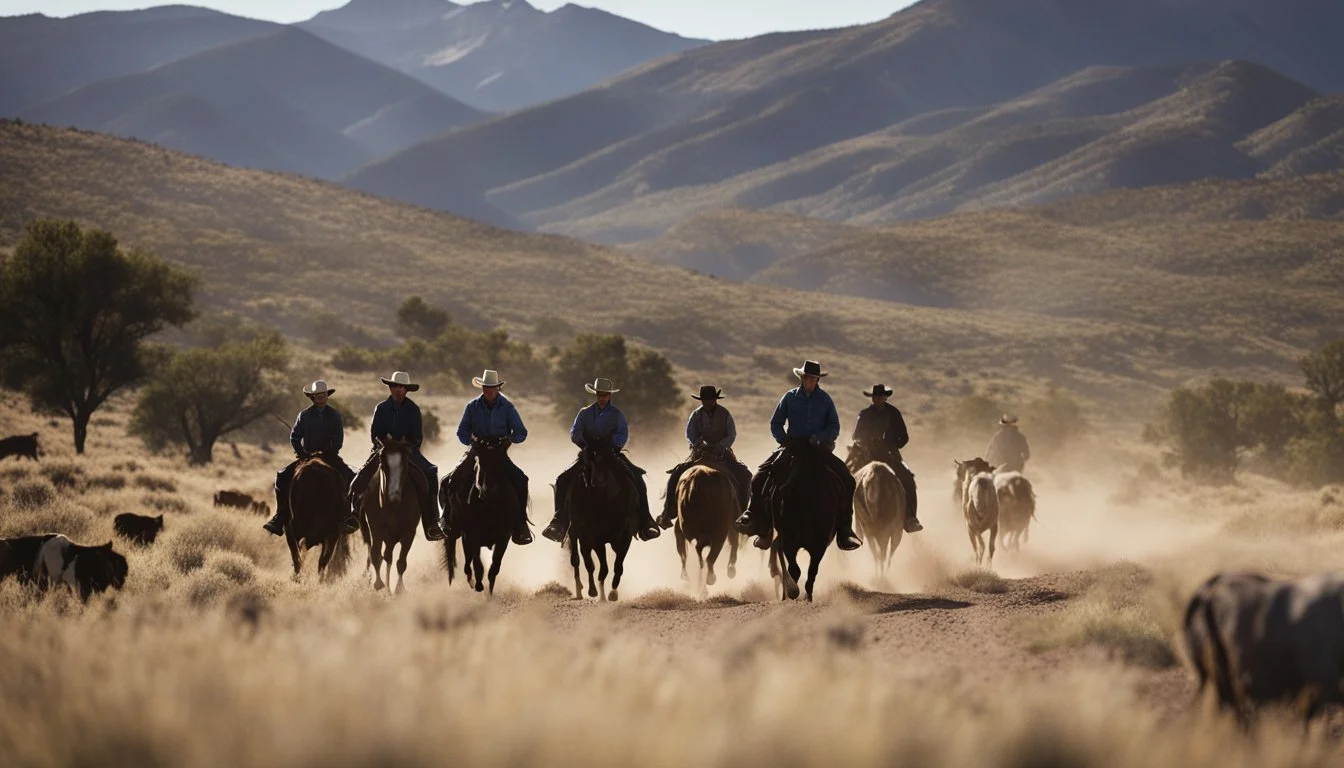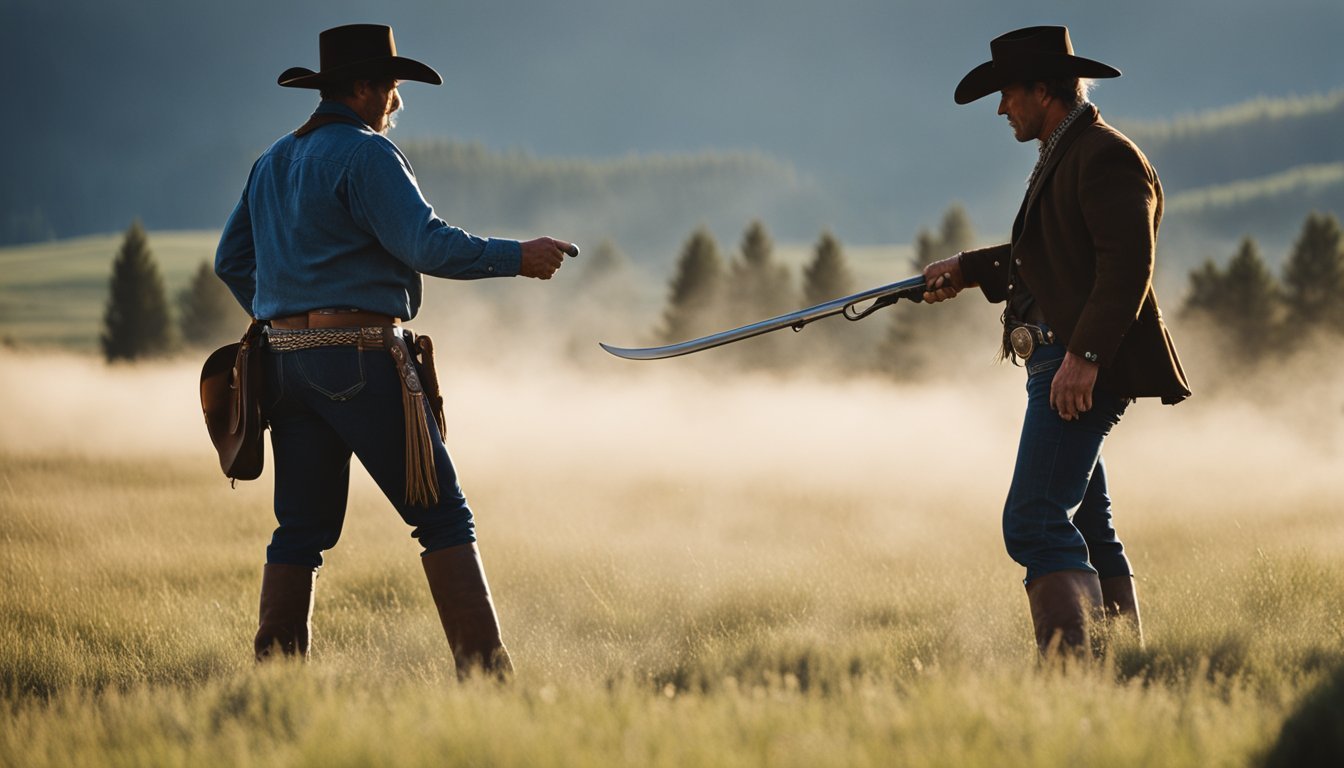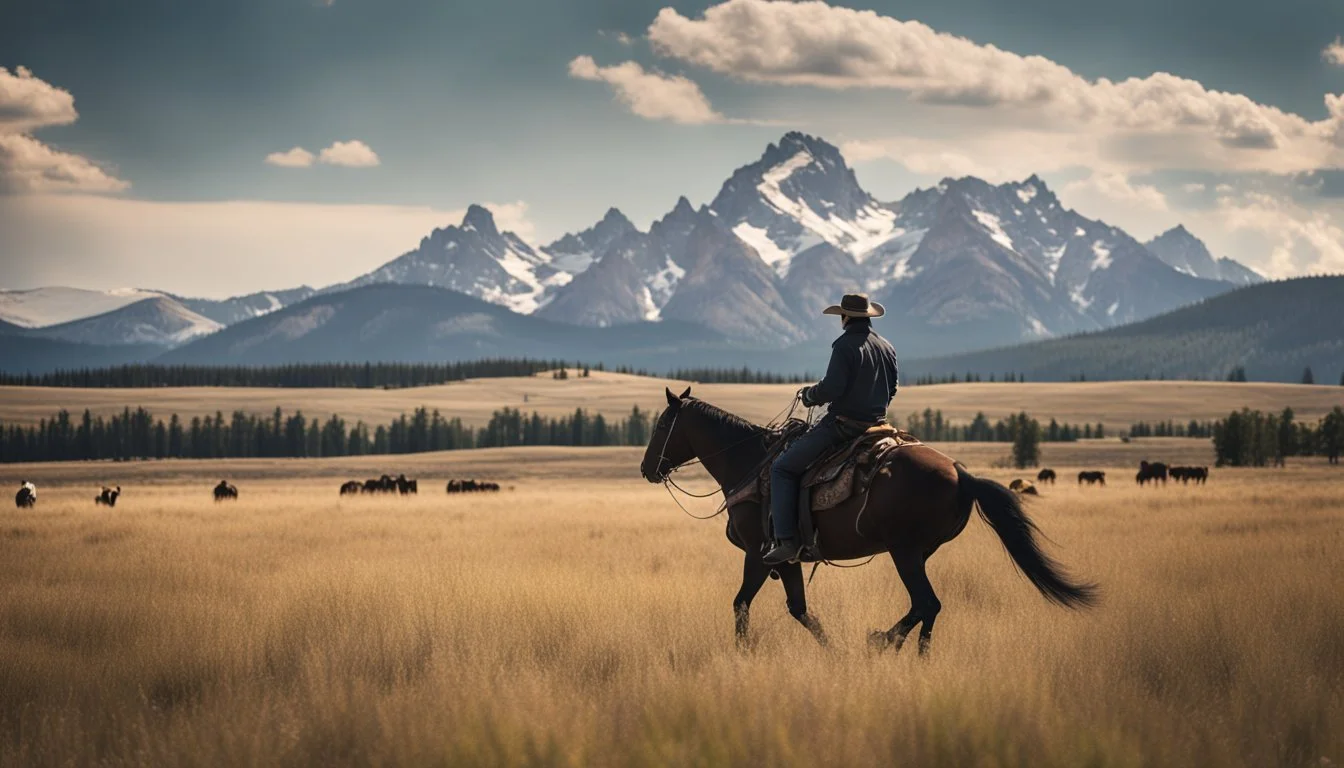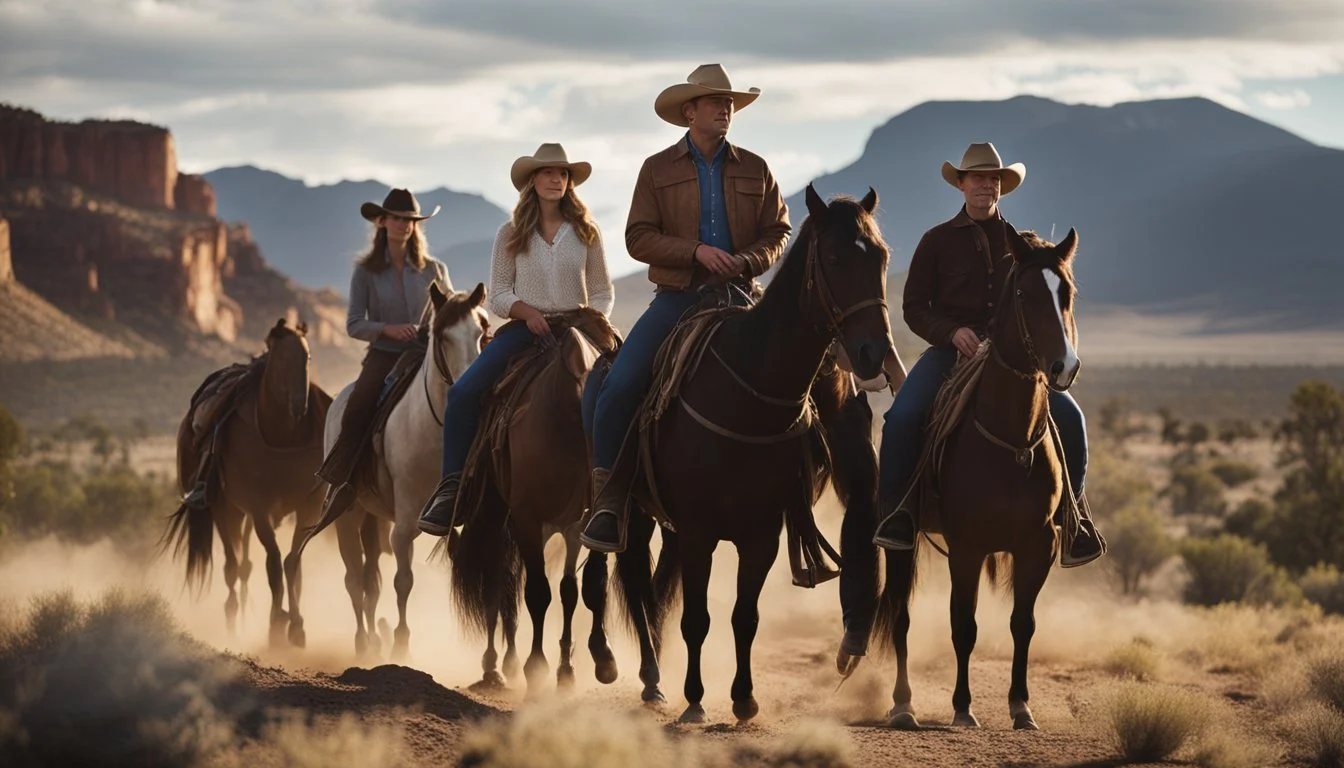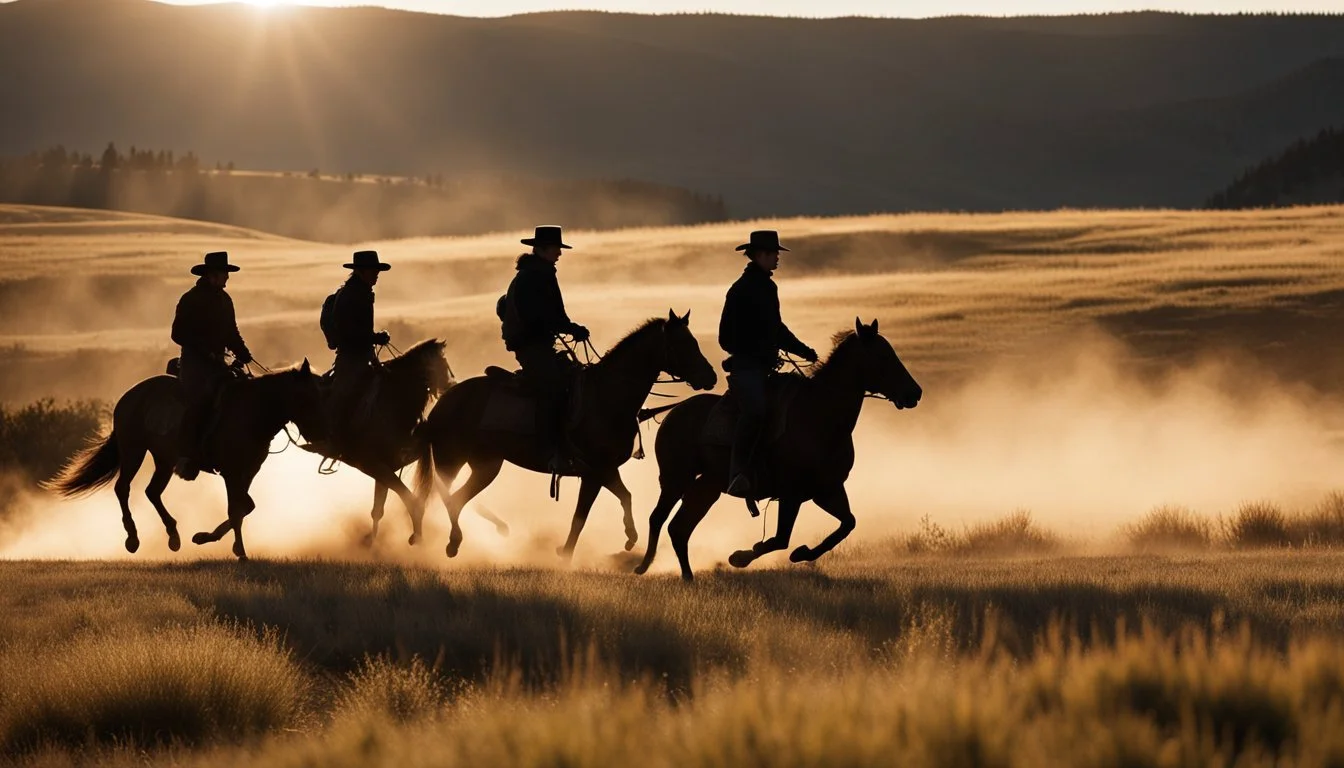Yellowstone Reimagined: What If Dinosaurs Roamed the Dutton Ranch?
Yellowstone, the hit TV series starring Kevin Costner, has captivated audiences with its portrayal of the Dutton family's struggles to maintain their vast Montana ranch in the present day. The show's success has spawned multiple spin-offs set in different time periods, exploring the rich history of the Dutton dynasty.
Shifting Yellowstone to a different era could dramatically alter the dynamics of the series while preserving its core themes of family, power, and the American West. A 1950s setting might showcase the ranch's post-war boom and modernization efforts. Alternatively, placing the Duttons in the 1970s could highlight environmental concerns and changing attitudes towards land use.
Taylor Sheridan's Yellowstone franchise has proven adaptable to various historical contexts. The spin-offs 1883 and 1923 demonstrate how the Dutton saga resonates across different time periods. This flexibility suggests that the main series could potentially thrive in alternative eras, offering fresh perspectives on the enduring legacy of the Yellowstone Dutton Ranch.
Conceptualization of Yellowstone Across Different Eras
Yellowstone's rich history spans over a century, encompassing pivotal moments in American history. The Dutton family's saga unfolds against backdrops of western expansion, economic turmoil, global conflicts, and modern challenges.
Yellowstone in the Era of Western Expansion
In 1883, the Dutton family embarked on their journey to Paradise Valley. This period marked the tail end of westward expansion, with settlers seeking new opportunities in Montana's rugged terrain. The Duttons faced harsh conditions, hostile encounters, and the daunting task of establishing their ranch.
Native American conflicts and land disputes were common. The family had to navigate complex relationships with indigenous tribes while carving out their place in the untamed wilderness.
Transportation relied heavily on horses and wagons. The arrival of railroads brought significant changes, connecting remote areas to larger markets and facilitating the growth of ranching operations.
Yellowstone Amidst the Prohibition and the Great Depression
The 1923 setting explores the Dutton family's struggles during Prohibition and the lead-up to the Great Depression. Bootlegging became a lucrative but dangerous enterprise, potentially influencing the ranch's operations or causing conflicts with law enforcement.
Economic hardships hit ranchers hard. The Duttons likely faced challenges in maintaining their land and livestock amid falling prices and drought conditions. Labor disputes and social unrest added to the period's tensions.
Technological advancements like automobiles and telephones began to reshape rural life, though their adoption was gradual in remote areas like Paradise Valley.
Yellowstone During World War I and II
World War I (1914-1918) and World War II (1939-1945) dramatically impacted the Yellowstone region. Ranch operations adapted to wartime demands, potentially shifting focus to support the war effort through increased cattle production or crop diversification.
Labor shortages occurred as young men left for military service. Women and older family members took on expanded roles in ranch management and daily operations.
Post-war periods brought economic booms and societal changes. Returning veterans sought to reclaim their place on the ranch, potentially leading to generational conflicts and shifts in family dynamics.
Modern-Day Yellowstone: A 21st Century Resettlement
In the present day, the Dutton ranch faces challenges unique to the 21st century. Land development pressures threaten the traditional ranching way of life. Corporate interests and wealthy outsiders seek to acquire prime Montana real estate.
Environmental concerns play a significant role. The family must balance ranching practices with conservation efforts and wildlife protection regulations.
Technological advancements offer new tools for ranch management but also bring complications. Social media and internet connectivity impact the once-isolated lifestyle of the Duttons.
Political and economic forces shape the modern ranching landscape. The family navigates complex relationships with local government, tribal authorities, and business interests to maintain their legacy.
Evolution of the Dutton Family's Legacy
The Dutton family's legacy spans over a century, marked by struggles, triumphs, and adaptation to changing times. Their story intertwines with the history of the American West, showcasing resilience and determination across generations.
Foundations in the 19th Century
James Dutton, the family patriarch, embarked on a perilous journey westward in 1883. He sought a better life for his family in the untamed lands of Montana. James and his wife Margaret faced numerous hardships, including harsh weather, conflicts with Native Americans, and the challenges of settling new territory.
The couple's perseverance laid the groundwork for the Yellowstone Ranch. Their children, including John Dutton I, grew up learning the ways of ranching and survival in the rugged landscape. This period set the stage for the Dutton family's deep connection to the land.
Surviving Economic Turbulences and Wars
By 1923, the Dutton ranch faced new challenges under the leadership of Jacob Dutton. The family navigated economic hardships during the Great Depression and the impacts of World War I. Cara Dutton played a crucial role in maintaining the ranch's operations during these trying times.
Spencer Dutton, scarred by his experiences in World War I, returned to contribute to the family legacy. The Duttons' ability to adapt and overcome financial struggles and global conflicts strengthened their resolve to protect their land at all costs.
Duttons in Contemporary Society
In modern times, John Dutton III leads the family, facing threats from land developers, Native American reservations, and changing societal norms. His children - Beth, Jamie, and Kayce - each play unique roles in preserving the ranch and navigating complex business and political landscapes.
Beth Dutton's sharp business acumen and Jamie's legal expertise become valuable assets. The family grapples with evolving environmental regulations, corporate interests, and shifting public opinions about land use. Despite internal conflicts, the Duttons remain united in their commitment to keeping the ranch intact.
Historical Shift of the Ranch's Operations
The Yellowstone Dutton Ranch has undergone significant transformations throughout its history. These changes reflect broader shifts in agricultural practices, economic conditions, and technological advancements in the American West.
Early Ranching and Livestock Management
The Dutton Ranch began as a traditional cattle operation in the late 19th century. Cowboys on horseback managed vast herds across open ranges. Branding cattle and seasonal roundups were essential practices. The ranch relied heavily on horses for transportation and herding.
Livestock diversification became crucial for economic stability. Sheep were introduced alongside cattle to maximize land use and profit. This period saw the construction of essential ranch infrastructure like barns, corrals, and living quarters for ranch hands.
Water management emerged as a critical concern. The Duttons implemented irrigation systems to support grazing lands and hay production for winter feed.
Ranching Through Economic Crises and War
The Great Depression hit ranching communities hard. The Dutton Ranch adapted by focusing on self-sufficiency and diversifying income streams. They may have leased land for oil exploration or timber harvesting to supplement ranching income.
World War II brought new challenges and opportunities. The ranch likely contributed to the war effort by increasing beef production. Labor shortages led to increased mechanization and the adoption of new farming technologies.
Post-war economic boom saw the ranch investing in modern equipment. Tractors and trucks began replacing horse-drawn implements. The Duttons likely expanded their landholdings during this period of prosperity.
Adapting to Modern Agricultural Practices
Recent decades have seen the Dutton Ranch embrace sustainable ranching methods. Rotational grazing techniques help preserve grasslands and improve soil health. The ranch has likely implemented conservation easements to protect wildlife habitats and scenic vistas.
Technology now plays a crucial role in ranch management. GPS tracking of livestock, drone surveillance of pastures, and computerized record-keeping have become standard practices. The ranch may have diversified into value-added products like organic beef or farm-to-table initiatives.
Climate change has forced adaptations in water management and grazing practices. The Duttons have likely invested in drought-resistant crops and more efficient irrigation systems. Balancing traditional ranching with modern conservation efforts has become a key focus for the ranch's long-term sustainability.
In-Depth Character Studies Across Time
Yellowstone's characters evolve across different eras, reflecting changing values and challenges. Their core traits persist while adapting to new circumstances, providing rich material for character analysis.
Pioneering Ancestors and Their Values
James and Margaret Dutton embody the spirit of 19th-century pioneers. Their determination and grit lay the foundation for the Dutton legacy. James' leadership skills and Margaret's resilience shape their family's future.
These early Duttons face harsh frontier conditions, forging strong bonds with the land. Their values of hard work, family loyalty, and self-reliance become cornerstones of the Dutton identity.
The 1883 setting highlights the physical and emotional toll of westward expansion. It showcases the Duttons' ability to adapt and survive in unforgiving circumstances.
The Duttons' Struggle for Power and Identity
John Dutton III, portrayed by Kevin Costner, stands as a modern patriarch. He fiercely protects the family ranch, balancing tradition with the pressures of a changing world.
Beth Dutton emerges as a formidable force, her sharp business acumen matched only by her loyalty to family. Jamie Dutton grapples with his place in the family, his ambition often at odds with Dutton values.
Rip Wheeler, though not a Dutton by blood, embodies the ranch's ethos. His unwavering dedication to John and the land makes him an integral part of the family's power structure.
Modern Heirs and Their New Challenges
As Yellowstone moves into the present day, new challenges arise. Kayce Dutton balances his roles as a rancher, father, and former Navy SEAL.
Tate Dutton, representing the youngest generation, faces the complexities of growing up in a powerful family. His experiences bridge Native American heritage and Dutton legacy.
Monica Dutton brings an outsider's perspective, challenging long-held family beliefs. Her presence highlights the evolving dynamics of the modern Dutton clan.
Jimmy's journey from ranch hand to rodeo competitor reflects the changing nature of Western life and the search for individual identity within tradition.
Cultural and Social Context
Yellowstone's setting in modern-day Montana provides a rich backdrop for exploring complex cultural and social dynamics. The show's narrative interweaves historical legacies with contemporary challenges, highlighting the evolving relationships between different communities in the American West.
Interaction with Native American Tribes
The Broken Rock Indian Reservation plays a pivotal role in Yellowstone's storyline. Chief Thomas Rainwater leads the tribe's efforts to reclaim ancestral lands from the Dutton family. This conflict reflects real-world tensions between Native American tribes and non-Indigenous landowners.
Historically, the Broken Rock Reservation faced numerous challenges, including land loss and cultural suppression. The show depicts ongoing efforts to preserve Indigenous traditions and assert tribal sovereignty.
Chief Rainwater's character embodies the complexities of modern tribal leadership. He navigates political pressures, economic development, and cultural preservation while advocating for his people's rights.
Impact of Immigration and Land Laws
Montana's history of immigration and changing land ownership patterns shapes Yellowstone's narrative. The Homestead Acts of the late 19th and early 20th centuries significantly impacted land distribution in the region.
European immigrants settled vast areas of Montana, often displacing Indigenous communities. This historical context underlies current conflicts over land rights and resource management depicted in the show.
Yellowstone explores the lasting effects of these policies through the Dutton family's multi-generational claim to their ranch. It also highlights the challenges faced by smaller landowners and newcomers to the area.
Contemporary Sociopolitical Landscape
Yellowstone portrays Montana's modern sociopolitical environment, marked by tensions between traditional ways of life and encroaching development. The show tackles issues such as land use conflicts, environmental conservation, and economic pressures.
Political dynamics play a crucial role, with characters representing various interests vying for power and influence. Local politics intersect with state and federal policies, reflecting real-world challenges in governance.
The series also addresses current social issues, including wealth disparities, rural-urban divides, and changing demographics in Montana. These themes resonate with broader national conversations about identity and social change in America.
The Legacy of Yellowstone's Spin-Offs
Yellowstone's success has spawned a series of spin-offs that expand the Dutton family saga across different time periods. These shows explore the rich history and complex characters that shape the Dutton legacy.
Chronicling the Dutton Saga in '1883'
'1883' takes viewers back to the late 19th century, following the Dutton family's arduous journey westward. The series stars Tim McGraw and Faith Hill as James and Margaret Dutton, the ancestors of Yellowstone's John Dutton.
Sam Elliott joins the cast as Shea Brennan, a tough cowboy guiding the Duttons across the frontier. The show offers a gritty portrayal of pioneer life, showcasing the challenges faced by early settlers.
'1883' received critical acclaim for its stunning visuals and strong performances. It provides crucial backstory to the Dutton family's connection to their land, laying the foundation for the events in Yellowstone.
Exploring '1923': The New Frontier of Dutton Legacy
'1923' continues the Dutton story in the early 20th century. Starring Helen Mirren and Harrison Ford, this spin-off focuses on a new generation of Duttons facing the challenges of Prohibition and the Great Depression.
The series explores themes of economic hardship, changing social norms, and the evolving American West. It bridges the gap between '1883' and the modern-day Yellowstone, offering insights into how the Dutton empire was built and maintained.
'1923' has been praised for its production values and the star power of its lead actors. It adds depth to the Dutton family history, revealing the struggles that shaped their fierce determination to protect their land.
Subsequent Spin-Offs and the Expanding Universe
Taylor Sheridan's vision for the Yellowstone universe continues to grow with additional spin-offs in development. '6666' is set to focus on the historic Four Sixes Ranch in Texas, introducing new characters and storylines.
'1883: The Bass Reeves Story' will delve into the life of the first Black deputy U.S. marshal west of the Mississippi. This spin-off aims to broaden the scope of the Yellowstone universe beyond the Dutton family.
Paramount+ has also announced plans for a modern-day sequel series, potentially starring Matthew McConaughey. These new additions promise to further enrich the neo-Western genre and expand the cultural impact of the Yellowstone franchise.
The Cinematic Development and Success
Yellowstone's journey from concept to cultural phenomenon showcases the power of compelling storytelling and strategic production. The show's creation, critical reception, and future prospects have solidified its place in television history.
Original Series Creation and Paramount's Role
Taylor Sheridan and John Linson developed Yellowstone as a modern Western drama. Paramount Network greenlit the series, recognizing its potential to captivate audiences. The show premiered in June 2018, quickly gaining traction among viewers.
Paramount's support allowed for high production values, including stunning cinematography of Montana landscapes. This visual appeal became a hallmark of the series, drawing comparisons to cinematic Westerns.
The network's commitment extended to marketing efforts, helping Yellowstone build a dedicated fanbase from its early seasons.
Critical Reception and Audience Growth
Initial critical response to Yellowstone was mixed, with some praising its ambition while others criticized certain narrative elements. However, audience reception was overwhelmingly positive from the start.
Viewership grew steadily with each season:
Season 1 averaged 2.2 million viewers per episode
Season 2 saw an increase to 3.9 million
Season 4 hit record highs with 11 million viewers for its finale
Critics warmed to the show over time, praising its complex characters and exploration of contemporary Western themes. The performances, particularly Kevin Costner's lead role, garnered widespread acclaim.
Future Prospects and Potential Storylines
Yellowstone's success has spawned multiple spin-offs and prequels, expanding the franchise's universe. The "Yellowstone Origin Story" explores the Dutton family's past, while future series may delve into different time periods or locations.
Paramount+ is leveraging the show's popularity to boost its streaming platform. New storylines could explore:
Historical events shaping the American West
Modern challenges facing ranchers and Indigenous communities
Political and environmental conflicts in rural America
As Yellowstone continues to evolve, its influence on the television landscape and cultural conversations about the American West remains significant.
Dutton Family's Political Influence
The Duttons wield significant political power in Montana, shaping land policies and governance. Their influence extends from local matters to state-level decisions, often pitting them against developers and other interests.
Land Politics and Conservation Conflicts
John Dutton's fierce protection of his ranch puts him at odds with land developers and corporate interests like Market Equities. He leverages political connections to fight against encroachment on his property. The family's use of conservation easements becomes a contentious issue, allowing them to maintain control while receiving tax benefits.
These conflicts highlight the tension between preservation and development in Montana. John's stance on land use aligns him with some environmental groups, creating unlikely alliances.
Influence in Local and State Governance
The Duttons' reach extends deep into local politics. They cultivate relationships with sheriffs, judges, and county officials to maintain their grip on power. Jamie Dutton's legal career serves as a pathway to increase family influence in the judicial system.
Beth Dutton's business acumen allows her to manipulate economic levers, influencing policy decisions that affect the ranch. Her aggressive tactics often blur ethical lines but prove effective in advancing family interests.
Montana Governor and the Fight for Control
John Dutton's bid for Montana governorship represents the pinnacle of the family's political ambitions. This move puts them in direct conflict with established political networks and corporate lobbyists.
As governor, John gains unprecedented power to shape state policies on land use, water rights, and resource management. His position intensifies the struggle between rural traditionalists and urban developers.
The governorship becomes a battleground for competing visions of Montana's future. John's administration faces challenges from Market Equities and other entities seeking to modernize the state's economy at the expense of its ranching heritage.
Conclusion
Reimagining Yellowstone in different time periods opens up exciting narrative possibilities. The Dutton family saga could unfold against various historical backdrops, from the Wild West to the Great Depression or even a futuristic setting.
Taylor Sheridan's creation has already proven adaptable across eras with prequels like 1883 and 1923. Shifting the main series to another time could offer fresh perspectives on the enduring themes of land ownership, family legacy, and power struggles.
A different temporal setting might alter the dynamics with Yellowstone National Park or introduce new challenges for the Duttons. It could also provide opportunities to explore how societal changes impact ranching and land use over time.
Paramount Network and Paramount+ have shown a willingness to expand the Yellowstone Universe. A time-shifted version could potentially attract new viewers while satisfying existing fans with familiar characters in unfamiliar circumstances.
Ultimately, the strength of Yellowstone lies in its compelling characters and complex relationships. These elements could translate effectively to various historical or future contexts, maintaining the essence of the show while offering novel storytelling avenues.

